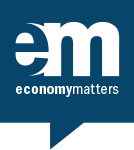
Counterfeiting United States currency nowadays isn't the simple proposition it was back in the era when Victor Klingensmith printed fake banknotes on equipment he carried in his suitcase.
In the 1920s and 1930s, Klingensmith excelled at his minimalist approach to equipment. He printed $1, $5, and $10 notes with gear that fit into his luggage—a few printing plates, ink, chemicals, and sundry supplies. Secret Service agents trailed Klingensmith and his fake money to cities including Salt Lake City, Sacramento, Los Angeles, St. Louis, East St. Louis, Tampa, Philadelphia, and Savannah.
Despite his journeys, Klingensmith was caught, repeatedly. By the time he was 37 years old, wearing a glass left eye, and using an alias, Klingensmith had been arrested four times and had served 10 years behind bars on counterfeiting charges, including a six-year stretch in the Atlanta Federal Penitentiary, according to a statement the Treasury Department issued November 24, 1934.
In modern times, the digital printing technology used by some counterfeiters is less portable than the sackful of gear that Klingensmith carried. What these crooks lose in mobility can be made up in quality that continues improving as technology innovations reduce costs and advance the capabilities of computers, printers, and scanners.
 Counterfeit currency on display at the Atlanta Fed's Monetary Museum. |
The Atlanta Fed and the 11 other Federal Reserve Banks, have their own high-tech equipment that identifies fake notes and removes them from circulation. The goal is simple: enhance the nation's financial stability by ensuring the integrity of banknotes.
The physical review of notes is part of the collaborative effort to protect the nation's cash, and it involves the Fed screening banknotes. The Treasury Department's Bureau of Engraving and Printing (BEP) adds security features to notes that impede counterfeiters, and the US Secret Service investigates and prosecutes counterfeiters who make and distribute fake notes.
At the Atlanta Fed's Cash Services Division, the process of searching for counterfeit currency follows the same procedure used across the Fed System. Every note submitted to a Reserve Bank by any of the Fed's 8,400-plus partner financial institutions moves through a cash-processing machine that spots signs of counterfeit and deterioration.
These machines use intelligent-sensor algorithms to examine the security features embedded in each note. Some features are visible to the naked eye such as security ribbons and threads embedded in the paper while others are not publicly disclosed. Notes are redesigned periodically to enhance their security features.
BEP reports the research and development of a new design can take more than a decade, followed by several years of testing, during which the design may change. The current schedule was announced in 2011 and projects five denominations with new designs being released every two years, from 2026 to 2034.
Notes deemed as counterfeit are withdrawn from circulation and delivered to the Secret Service for investigation and potential prosecution. The Fed does not reveal information about the number or face-value of the counterfeit notes it catches. Meanwhile, banknotes that are in good shape are returned to circulation along with new notes from the BEP. Notes that are not suitable for circulation are destroyed by the machine.
Karen L. Todd handles millions of dollars each day in her role at the Atlanta Fed operating a high-speed, cash-processing machine, capable of processing 100,000 notes per hour. Todd wears gloves when she's handling cash. So do her colleagues. Everyone wants protection from the contaminants on banknotes including mold, from being stored in a mattress or buried underground, and traces of smoke and fire.
The Federal Reserve Bank of Atlanta operates four of the Fed's 28 cash-processing facilities. Visitors to the Atlanta Fed can watch these machines in action when they visit the Atlanta Monetary Museum. Big glass windows provide views of cash specialists unpacking bundles of money and inserting the notes into the processing machine. The museum is free and open to the public.
The Fed's Board of Governors issued a report in February that estimated the volume of counterfeit currency in circulation in the United States. Ruth Judson, a senior economic project manager in international finance, said that she conducted the research to update the estimates provided for similar reports issued in 2000, 2003, and 2006. These reports stemmed from a congressional directive for the Fed and Treasury Department to create estimates of counterfeits in circulation.
The February report determined the public endured "miniscule" financial losses from counterfeit notes with face values of $20 or less, which are the most commonly used denominations.
The research showed that no more than $30 million in counterfeit notes, or one in 40,000, are in circulation in the United States. The more likely figure is about $15 million, or one in 80,000 notes.
These figures show a significant decline from the rate of counterfeits estimated in 2006 at one in 10,000 notes. Judson attributed the decrease to higher-security banknotes and increased public education about security features. For instance, the BEP enhanced the security of the popular $100 note in 1996 and 2013 and plans to release a third revision in 2034.
The decrease observed in Judson's paper coincides with a dip in the number of individuals sentenced for federal counterfeiting offenses in the past five years, from 229 persons in fiscal year (FY) 2010 to 67 in FY 2023, according to the US Sentencing Commission. The median loss for counterfeiting offenses was $6,600 in FY 2019 and $8,640 in FY 2023.
A recent prosecution illustrates how Klingensmith's counterfeiting continued to this day.
A Federal judge on May 2, sentenced an Illinois man to five and a half years in prison following his second conviction of counterfeiting. The second case involved counterfeiting at his home. In the first case, in 2020, the site of the operation was comparable to Klingensmith's, as it was based at a budget motel. In the motel room, Secret Service agents and local authorities found four printers, a paper cutter, various counterfeiting implements, and fake money—$20,000 in the counterfeiter's truck and an additional $20,000 in the room.
Know Your Money: Click here for the Secret Service's easy-to-read fact sheet on the security features of US notes.




